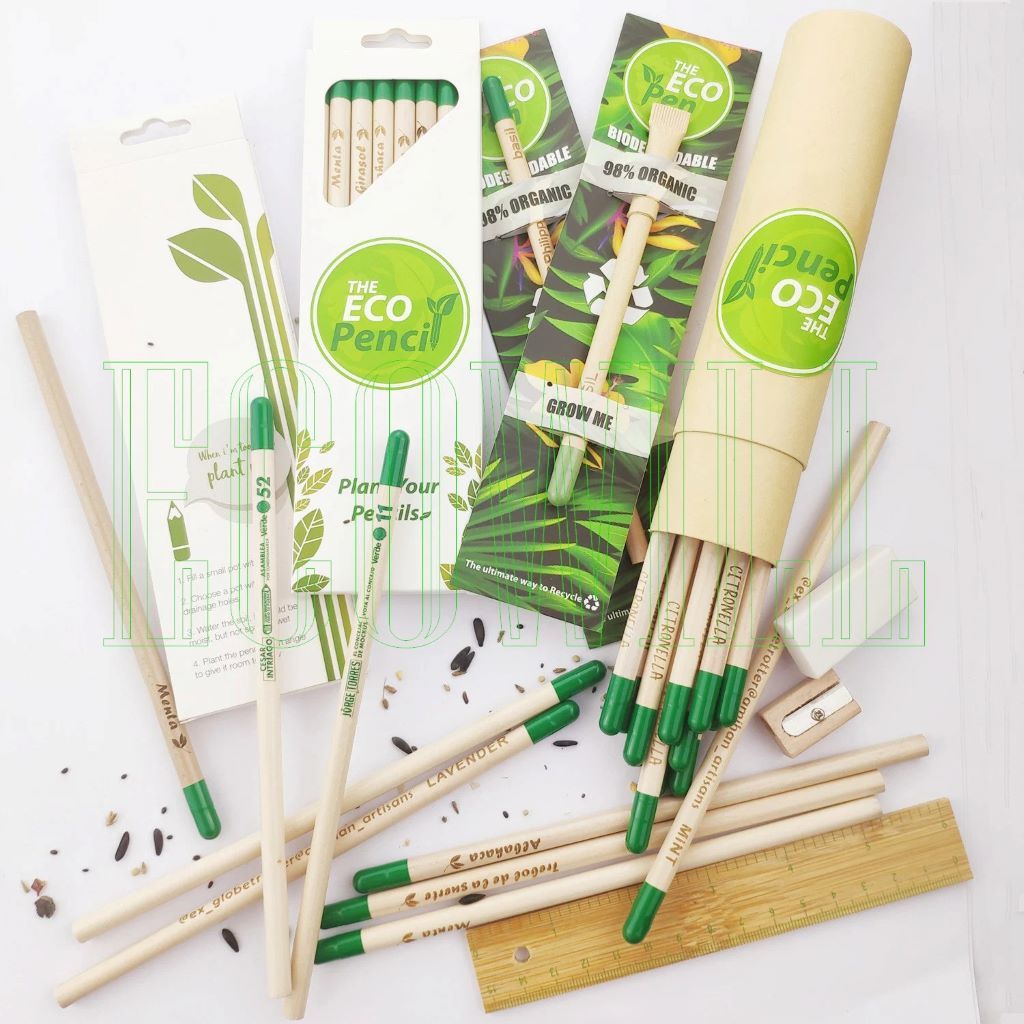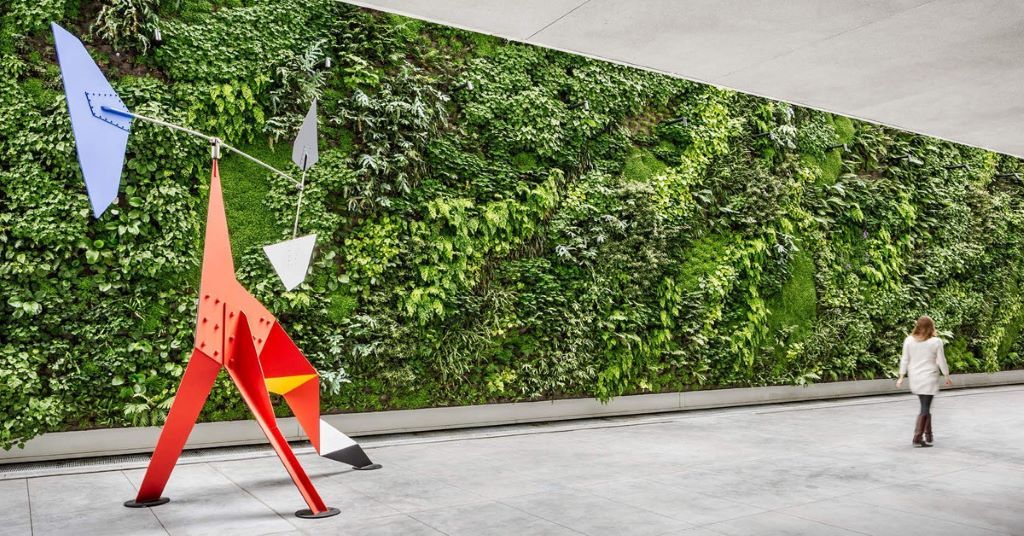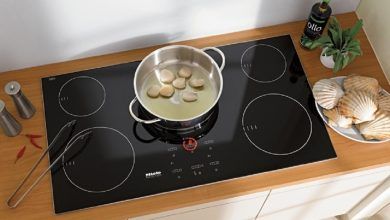
Plantable Stationery: Grow Your Own Office Supplies
Featurd Image SourceIn an age where environmental consciousness is no longer optional but essential, innovative ideas are transforming the way we interact with everyday items. One such revolution is plantable stationery, a unique concept that blends functionality, eco-friendliness, and the joy of nurturing new life. Imagine tossing your used notepad or holiday card into the soil and watching it sprout into flowers, herbs, or vegetables. This brilliant solution to wasteful paper usage offers both practicality and sustainability.
By using plantable stationery, individuals and businesses can take tangible steps toward reducing their carbon footprint. It’s an inspiring way to align with eco-friendly practices while adding a creative touch to everyday office supplies. And if you’re looking to explore innovative green solutions, you can also check out products like those from Green Ideas Products for more sustainable alternatives to daily essentials.
What Is Plantable Stationery and Why Is It Important?
At its core, plantable stationery is paper embedded with seeds that germinate when planted in soil. The seeds are typically mixed into biodegradable paper pulp, ensuring that as the paper breaks down, it nourishes the soil and facilitates plant growth.
The importance of this concept lies in its ability to address two major environmental issues: deforestation and waste. According to the World Counts, roughly 40% of the world’s industrial wood harvest is used for paper production, and much of this paper ends up in landfills. Plantable stationery reduces this burden by giving paper a second life as a green, growing entity.
Businesses that adopt plantable stationery also gain a valuable marketing edge by showcasing their commitment to sustainability. This simple yet impactful gesture resonates with customers who prioritize eco-conscious brands.
The Materials Behind Plantable Stationery
The magic of plantable stationery lies in its composition. Here’s what goes into creating these eco-friendly marvels:
- Recycled Paper: Made from post-consumer waste, this paper reduces the need for virgin wood pulp.
- Seeds: Commonly used seeds include wildflowers, basil, tomatoes, lavender, and even carrots. They’re carefully chosen to ensure they can thrive in a variety of climates.
- Non-Toxic Inks: It uses vegetable-based or water-based inks to ensure no harmful chemicals leach into the soil.
- Biodegradable Adhesives: The glue or binding materials used in plantable notebooks and cards are designed to decompose naturally.
The end product is not only sustainable but also safe for the environment and easy to use.
Sustainable Wall Paint and Its Role in Eco-Friendly Spaces
While plantable stationery focuses on reducing paper waste, it’s worth exploring other aspects of sustainability, such as sustainable wall paint. Much like plantable paper, eco-friendly wall paints contribute to creating greener spaces by eliminating toxic chemicals that harm the environment.
Just as plantable paper uses natural materials to minimize its ecological impact, sustainable wall paints are made from plant-based resins and minerals. These paints improve indoor air quality, reduce health risks, and lower the overall environmental burden. Together, such innovations demonstrate how small choices can make a big difference.
Applications of Plantable Stationery in Everyday Life
Plantable stationery isn’t limited to office supplies; it has found its way into various aspects of our lives. Here’s a closer look at its diverse applications:
- Business Cards: Impress clients with eco-friendly business cards that leave a lasting impression—literally!
- Notebooks and Journals: Perfect for writers and creatives, these products combine functionality with the potential to grow flowers or herbs.
- Event Invitations: Wedding and party invitations made from plantable paper are trending as sustainable options that guests can cherish long after the event.
- Greeting Cards: Birthdays, holidays, and other celebrations become more meaningful when cards transform into living plants.
- Corporate Gifting: Companies are increasingly using plantable calendars, bookmarks, and pens as promotional items to align with their green goals.
These applications make plantable stationery an incredibly versatile and meaningful solution for anyone looking to reduce waste.
How to Use Plantable Stationery Effectively
Using it is as simple as it is rewarding. Here’s how to get started:
- Write and Use Normally: Use the stationery for its intended purpose, whether it’s jotting down notes or sending heartfelt messages.
- Prepare the Soil: Choose a pot or a garden bed with nutrient-rich soil. Ensure it’s free from weeds and debris.
- Plant the Paper: Tear the paper into smaller pieces for better soil contact, place it about 1/4 inch deep, and cover it lightly with soil.
- Water Regularly: Keep the soil moist but not waterlogged. This helps the seeds germinate.
- Watch It Grow: Within 1-3 weeks, you’ll see the first sprouts appear, depending on the seed type.
This simple process makes the concept both functional and interactive, turning a mundane act into an eco-conscious activity.
The Business Benefits of Adopting Plantable Stationery
Plantable stationery isn’t just for individuals; it’s a powerful tool for businesses as well. Companies can benefit in the following ways:
- Boost Brand Image: A commitment to sustainability can significantly improve brand perception, especially among eco-conscious consumers.
- Cost-Effective Marketing: Plantable promotional materials double as unique advertising tools.
- Employee Engagement: Introducing eco-friendly office supplies can inspire employees to adopt greener habits.
- Corporate Social Responsibility (CSR): Aligning with environmental initiatives enhances a company’s CSR efforts and helps attract partnerships with like-minded organizations.
Many businesses have already adopted plantable business cards, notebooks, and promotional items to stand out in competitive markets.
The Power of Loving Kindness Meditation: A Path to Inner Peace and Positive Change
Challenges and Limitations of Plantable Stationery
While plantable stationery is a game-changer, it isn’t without its challenges. Some of the common hurdles include:
- Cost: High-quality plantable paper can be more expensive than traditional paper, which might deter budget-conscious buyers.
- Limited Availability: Not all regions have easy access to plantable stationery suppliers, although online platforms are bridging the gap.
- Germination Issues: Factors like seed quality, soil type, and climate conditions can affect the growth rate, leading to inconsistent results.
Despite these challenges, the benefits far outweigh the drawbacks, making it an excellent investment for the future.
You Might Enjoy: The Versatile World of Cardboard: Unpacking Its Most Common Uses
FAQs
What types of seeds are used in plantable stationery?
Plantable stationery typically includes seeds for wildflowers, herbs, and vegetables, such as basil, parsley, marigold, and tomatoes.
How long does it take for seeds to sprout?
Most seeds begin to germinate within 1-3 weeks, depending on the plant variety and environmental conditions.
Is plantable stationery safe for all soil types?
Yes, but for optimal growth, it’s best to use nutrient-rich soil that retains moisture well.
Can plantable stationery be recycled?
While it’s designed to be planted, unused pieces can still be recycled like regular paper.
How does plantable stationery compare to traditional recycled paper?
Both are eco-friendly, but plantable stationery goes a step further by actively contributing to the environment through plant growth.
Conclusion
Plantable stationery represents a profound shift toward sustainable living. By embracing this innovative solution, we can reduce waste, support biodiversity, and bring a touch of nature into our daily lives. Whether you’re an individual looking to make greener choices or a business aiming to improve its sustainability practices, It offers endless possibilities.






